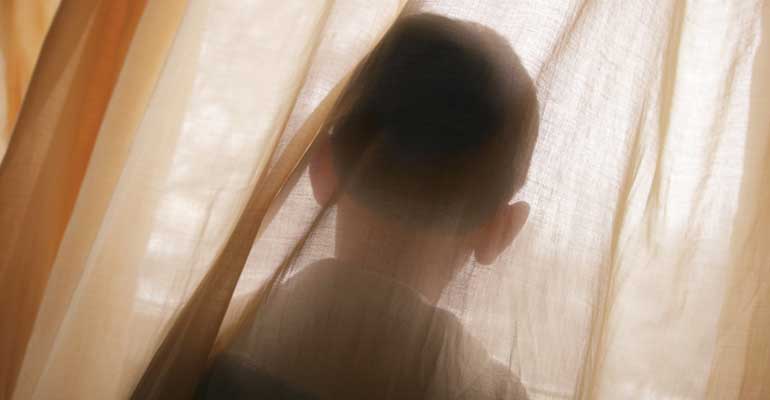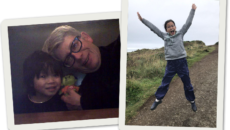From the moment 11-year-old Jake moved into their home, Shelley Pisula and her husband knew something felt wrong. They underwent intensive therapy and reached out for support to try to give this angry boy the home he needed, but Jake grew more oppositional and violent as the months passed.
“He turned our quiet, loving home into utter chaos,” says Pisula. “Especially when I was around.” They found out that Jake had been hurt by women in the past, but even with this knowledge, nothing they did helped to defuse his anger.
Pisula had dreamed of motherhood for so long that she tried to ignore the doubting voices in her head. Finally, though, after exhausting the services available to them, her family doctor advised her to reconsider the placement for the sake of her own health.
He “made me realize that it might be best for everyone involved — Jake and us — if we made the decision we had fought so long: to let go.”
Now Pisula and her husband are trying to rebuild. “Yes, it was was difficult. More difficult than I could ever convey.” The couple took comfort in being able to help place Jake with a single father with two other adopted sons.
Both of the other boys had painful pasts. The Pisulas hope that a home with different dynamics — no women to activate his anger, boys who understand his pain — will enable him to heal.
What Is Disruption?
A disruption is an adoption that fails before finalization, while a dissolution is an adoption that fails after finalization.
However, the term “disruption” is often loosely applied to any placement that doesn’t work out, regardless of the time frame. The word is apt because every failed placement, however brief, has a strong impact on the child and the family.
Leslie Laemmer adopted two children from Thailand who had each been through a disruption-like process: Each had been matched with a family — one of the girls even stayed with her potential family for four days in a hotel — before the families decided not to complete the adoptions.
Laemmer’s girls are still working through their sadness about the disruptions. One daughter has asked repeatedly why the other family didn’t want her, while the other gets panicky about separations, however brief.
More commonly, disruption occurs after a period of weeks or months, as was the case with Kay. She adopted an 8-year-old girl from Russia. After months of coping with the girl’s attachment disorder, she disrupted the adoption for the safety of the younger children in her home. “Our agency misrepresented the condition of the child,” says Kay.
She doesn’t put full blame on the agency, however, but on the challenges inherent in parenting a particularly troubled child. “How can run-of-the-mill parents become well-versed in attachment disorder and treatments virtually overnight?”
Causes and Statistics
While adoption disruption is always a personal decision, there are common causes that lead to it.
One is a lack of preparation. “There is a fine line between scaring people off and educating them about the challenges the child will bring,” says Brenda McCreight, Ph.D., an adoption consultant and author of Parenting Your Adopted Older Child.
“Couples may have a hard time understanding some of these issues concretely. You can tell them about the challenges a child with Fetal Alcohol Spectrum Disorder will face, but it’s harder to convey how exhausting it can feel to live with those behaviors day to day.”
“How a child acts in an institutional setting can be very different from the way he’ll act in a family environment,” says Lin Strasser, who works with families and children who are disrupting or adopting after disruption. “There is no crystal ball that lets families foresee the future.” Nevertheless, she advises spending as much time as possible with the child before placement, to get a fuller picture of the challenges you’ll face.
And, unfortunately, a child’s troubled past can affect his ability to bond with his adoptive parents. For a child who has already experienced multiple rejections (read: a lifetime of valid reasons not to trust adults), it may take therapeutic intervention for parents to learn how to connect with the child and for the child to let down his guard. Parents must realize that it will take time to break down these walls.
Exact rates of adoption disruption are hard to pin down, since no single agency keeps statistics on all international and domestic adoptions, and the rate changes depending on the type of adoption and the age of the child.
According to studies conducted during the 1980s and cited in Barth and Berry’s Adoption and Disruption: Rates, Risks, and Responses, only 1 percent of infant adoptions disrupt. That rate rises with the child’s age, with the presence of special needs, and with the number of previous placements. About 7 to 10 percent of international adoptions of older, special-needs children disrupt.
The Taboo Topic
Families who disrupt an adoption are often burdened with a paralyzing sense of shame and failure, and feel condemned by others. Bring up disruption on an adoption list-serve, and you may be berated by other participants or cut off by the moderator.
“Disruption tends to be treated like a shameful secret,” says McCreight. “But we need to focus on the best possible outcome for the child rather than get hung up on blaming the parents, the agency, or anyone else involved.”
Adds Janice Goldwater, executive director of Adoptions Together, a non-profit adoption agency in Silver Spring, Maryland: “Families who disrupt are not bad families, nor are the children bad children. Generally, it is a poor match between the needs of the child and the resources of the parents. Children unable to thrive in one setting may blossom in another.”
Adopting After Disruption
Adoption disruption may be seen as tragic, but it can mean the start of a better life for parents and children. “Parents need not be afraid to adopt from a disruption,” says McCreight. “A child who couldn’t function in one family may be a star in another.”
In fact, a primary reason children from disruptions can go on to do well is that all involved with the first placement learned enough about the child’s needs and how he functions in a family to make a better match the second time.
Knowing that some good came of their time with the child can also be a comfort for the disrupting family, as was the case for Pisula and her husband.
Wendy Meeks, who adopted two children from disruption, agrees. Her daughter was initially adopted from a Russian orphanage and “had thoughts of suicide because she knew she was not the child they [her first adoptive family] wanted,” says Meeks.
But a better family match, realistic expectations, psychiatric help, and a new sister who’d also experienced disruption made Meeks’ home the right one. “Both daughters now are doing very well,” she says.
Preventing Disruption
If you’ve been considering an older-child adoption, how do you know you’re up to the challenge? You don’t want to put a child — or your family — through the trauma of disruption. How can it be prevented?
First of all, avoid adopting a child out of guilt or pity. “If the pictures of available children tug on your heartstrings even though your family feels complete, pull out your checkbook instead of compiling your dossier,” Strasser advises. “Many older children in orphanages aren’t eligible for adoption, and they would benefit from your generosity.”
Other ways to prepare:
- Research thoroughly. Read everything you can find on adjustment problems in internationally adopted children, institutionalized children, or children adopted from the foster-care system. Find out what resources are available in your community, so that you can initiate early intervention, therapy, and respite care if necessary.
- Do the math. Try to space siblings three or more years apart to avoid the conflicts and aggression that can lead to disruption.
- Make connections. Get in touch with other families who adopted children of similar ages and from similar backgrounds. They’re already in the trenches and can offer a real-world perspective on what to expect.
Such preparations may temper the excitement you feel about growing your family, but the reality check is vital. Agencies should help prospective adopters prepare, but if they’re working to place as many children as possible, they may end up glossing over potential problems.
If you sense that your adoption agency fell short, your first parental task is to do your own research and build your own supports. Experts agree that adequate post-adoption support is crucial to keeping adoptive families together and strong.
“Find experienced adopters or mentors in your community and make them your new best friends,” advises McCreight. “Other adoptive parents are truly the best source of advice and support.”
Moving On
It is common for a child whose placement has failed to receive therapy and support both during and after the process. But it’s equally important for the disrupting families to seek and receive support, as well.
“The loss of a child through disruption can be likened to a death in the family,” says Strasser. “It is the death of the family unit as the parents envisioned it.” For that reason, she advises grief counseling for families who are going through disruption.
Families should realize that a disruption doesn’t mean that you can never adopt again. Many families have had a placement that didn’t work out, but have gone on to adopt successfully. If this is the case, “take time to consider what you have learned from the disruption and what you can do differently with a different child next time,” advises McCreight.
“We are considering adopting again,” says Pisula, sounding a little shocked to be doing so. Her agency and social worker are encouraging about another adoption, “but we are approaching the process much more slowly this time.”
It isn’t an easy topic to think about. But lifting the veil of shame from adoption disruption can increase the chances of finding happy, permanent families for the many children in need.



